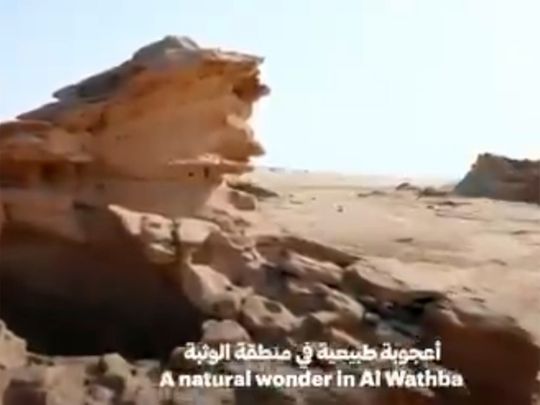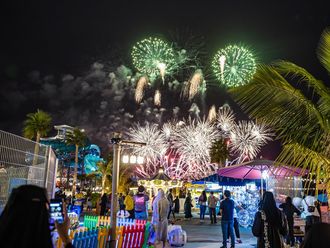
Abu Dhabi: Their edges seamlessly sharp yet fluid, the uniquely shaped fossil dunes in Abu Dhabi’s Al Wathba area are a sight to behold.
The emirate’s environment sector regulator, the Environment Agency Abu Dhabi (EAD), has therefore developed a comprehensive plan to preserve these rare natural formations, which look like works of art amid the desert sands. The plan includes regular inspections and patrolling, public awareness strategies about the importance of the site, and frequent and site clean-up drives. Work is also underway to declare the site a natural reserve.
Natural wonders
Fossil dunes are outcrops of lightly cemented, cross-bedded dune sands, formed over millions of years by the precipitation of calcium carbonate and other salts from groundwater during the glacial period. The formations in the Al Wathba area, which look like sand sculptures, derive their shape from the interaction between wind force and sediment supply, the EAD said in a statement.
Earlier this year, Abu Dhabi residents participating in an EAD-led clean-up drive had reported their shock at seeing defacement of the rock formations with graffiti.
Important habitat
“Abu Dhabi is rich with a unique diversity of environments, habitats, and scenic natural formations. Among these are the fossil dunes of Al Wathba. These distinctive and rather rare sand formations are densely located in the Al Wathba area to the south of the Al Wathba Wetland Reserve. The dunes, which are also present in other areas of the emirate, have been classified as lithified sand dunes under EAD’s Habitat Map and serve as an important habitat for many wildlife species,” said Dr Sheikha Salem Al Dhaheri, EAD secretary-general.
Al Dhaheri added that the fossil dunes are unique and are a significant element of the natural history of Abu Dhabi and the UAE, yet they are extremely fragile and prone to damage. “A team consisting of biodiversity experts and a number of engineers in EAD have carried out more than 20 evaluation visits to the site over the past three months, with the aim of developing a comprehensive plan to protect the site,” she added.
Monitoring and signs
“A monitoring programme that sees morning and evening patrols on the site has been set up to protect the area and prevent infringement,” said Ahmed Al Hashemi, EAD’s Acting Executive Director of the Terrestrial and Marine Biodiversity said: Temporary sign boards have also been installed in key locations at the site. In addition, the Abu Dhabi Centre for Waste Management (Tadweer) works with the EAD to periodically clean the site, and to install waste containers.
Al-Hashemi also indicated that temporary sign boards have been installed at key locations that are exposed to pressures at the site. EAD has also coordinated with the Abu Dhabi Centre for Waste Management (Tadweer) to clean the site periodically and add waste containers.
Littering
During two recent clean-up campaigns, volunteers collected around 300kg of waste from the site. The EAD teams also removed graffiti from the dunes, and intensified monitoring to prevent such vandalism in the future. The authority has also a social media campaign to educate the general public about the importance of the site, and to inform them about behaviours that can cause damage to the dunes like climbing and littering.






